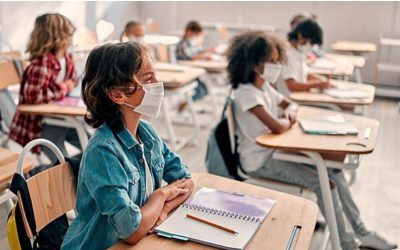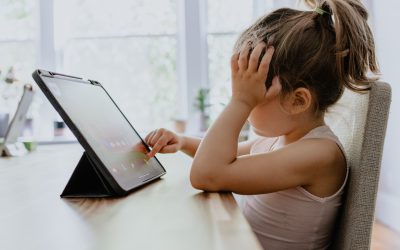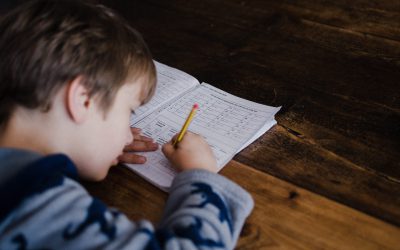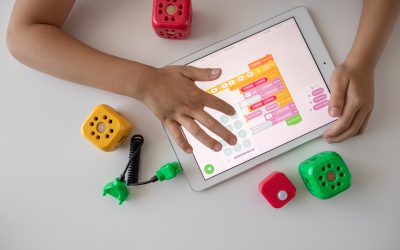News update March 30 – April 3
10 Apr 2020 | News
In the Netherlands, the week of March 30 focused on vulnerable children and their access to home-schooling (computer, internet access) and the safety of their home environment where isolation and parental stress over job loss might lead to violence or emotional distress.
We saw various initiatives, from the national government, school boards, as well as from municipalities and networks for inclusive education to provide children with laptops where needed and make special arrangements for these children to be educated either at home or elsewhere.
Prof. Dr. Melanie Ehren & Rukiye Turkeli
30-03-2020


On Friday 3 April, we discussed the week with Astrid Ottenheym (director of the network for inclusive primary education in Noord-Kennemerland), Mariska Westdijk (Director of Education & Identity of school board CSG De Waard), and Dorine Wiersma (parent and information manager of ‘Ouders en Onderwijs’, an organisation representing parents with school-aged children).
- Parents and home schooling
- Schools choose different approaches in how they design and implement homeschooling; in some situations they require parents to invest much time in supporting and teaching their children, while in other cases there are little expectations of parents to home teach their child. There is also variation in how much support students and parents need in accessing online teaching and the extent to which parents need to be engaged: some form of online teaching was already quite common in secondary schools (and students accustomed to it), while for teachers, students and parents in primary schools this is often new and more support is needed due to higher levels of ICT/online illiteracy.
- Where in the first week of home-schooling the focus was mainly on repeating instructional content, now new content is also offered and new concepts and skills are taught online. Schools try to work according to the same teaching philosophy and approach as common in school, such as starting with a plenary (possibly with a video, but preferably via interactive sessions where questions can be asked), then moving to small group-work with additional instruction for struggling learners (also in small groups).
- Children in vulnerable situations
- Last week, a central theme was the accessibility of home-schooling for vulnerable children, concerns were raised over their access to laptops and the internet, as well as the extent to which children end up in a potentially unsafe situation.
- One reflection from our group was the framing of this problem, saying that we should be talking about learners in vulnerable situations, rather than vulnerable children. It’s the situation that is vulnerable and needs to be addressed, rather than the child. And every situation calls for specific solutions.
- Customized solutions should be organized on the basis of existing trust relationships the families involves, rather than some of the current solutions of sending municipal inspectors to homes: people unknown to parents and carers and who create further anxiety and stress. Examples are organizing support through networks for inclusive education who know each family and make house/phone calls to check if all is well and if/how additional support needs to be organized. Examples or customized solutions that were mentioned are a family with 3 children who have to be educated together in a small space, where 2 children are now taught in school while the third child with special education needs is tutored at home by the parent.
- The network for inclusive education in Noord Kennemerland drafted a memo for all school boards, schools and other stakeholders in the region (municipality, youth care, childcare) to agree on this basic principle utilizing existing trust-based relations to organize support for vulnerable students.
- Other examples to support children in vulnerable situations:
- a Corona helpline (telephone number that can always be called) for parents,
- daily individualized text messages to parents, “old-fashioned” letters (in parents’ mother tongue) to parents, or
- teachers who cycle passed their students’ house at a fixed time and wave to children who post their schoolwork on the window (picture from a school in Amsterdam):
- Monitoring the quality of, and time spent on home-schooling
- The past few weeks have focused mainly on organizing the provision of home-schooling and online teaching, and ensuring that children have access to a laptop and the internet. Now (and certainly when schools are closed for a longer period of time), we will also have to think about quality of home-schooling and how we can offer a wide range of subjects.
- A good understanding of what is currently being taught allows teachers (now and when schools re-open) to remediate and differentiate their teaching, or offer additional teaching. Reflections from our network however also included examples of children, particularly those with special educational needs, who are doing exceptionally well in home-schooling and thrive in the current structure and situation. Some children also flourish due to the lack of testing.
- Examples of how to monitor and track the level of home-schooling are from our English colleagues at TeacherTapp. Schools/school boards could implement these tools to keep track of the actual teaching that is taking place: https://teachertapp.co.uk/learning-or-not-from-afar-the-first-week-of-school-closures/
- School inspections
- We discussed the suspension of regular school and school board inspections and concerns over schools under special measures, particularly those schools who failed their inspection because of irregularities in their examinations. Given the suspension of standardized national assessments, the outcomes of these examinations are now used as the sole measure of student achievement and to award a diploma and to place students in a track in secondary education.
- School leadership and school board governance
- Good school leadership is crucial to ensure a clear and concise approach to home schooling across teachers and schools, where teachers plan collaboratively in online environments and where there is clear communication to parents about their role and what they can expect from the school. Examples of what that looks like from the board of CSG De Waard who:
- In week 1, the board made an inventory among all schools about the ICT facilities (computers, software, use of platforms) available to teachers and families, which platforms and resources schools wanted to use and how they wanted to organize home-schooling.
- Through a collaborative process, using online platforms (for example google docs), schools agreed on a set of shared principles for home-schooling, for example to maintain the regular instruction model as much as possible, to have daily online contact with all children where their well-being would also be looked after, and ensuring group-work with teachers on a daily basis with live online interaction. Schools also agreed to share their child’s learning objectives with parents on a weekly basis so they are aware of what children would be working on.
- The school board set up a structure for collaboration between schools to ensure shared joint development of online materials, and sharing of good practice; agreeing that schools would provide sick cover in case teachers are ill.
See also information for:
Most recent blogs:
How LEARN! supports primary and secondary schools in mapping social-emotional functioning and well-being for the school scan of the National Education Program
Jun 28, 2021
Extra support, catch-up programmes, learning delays, these have now become common terms in...
Conference ‘Increasing educational opportunities in the wake of Covid-19’
Jun 21, 2021
Covid-19 has an enormous impact on education. This has led to an increased interest in how recent...
Educational opportunities in the wake of COVID-19: webinars now available on Youtube
Jun 17, 2021
On the 9th of June LEARN! and Educationlab organized an online conference about...
Homeschooling during the COVID-19 pandemic: Parental experiences, risk and resilience
Apr 1, 2021
Lockdown measures and school closures due to the COVID-19 pandemic meant that families with...
Catch-up and support programmes in primary and secondary education
Mar 1, 2021
The Ministry of Education, Culture and Science (OCW) provides funding in three application rounds...
Home education with adaptive practice software: gains instead of losses?
Jan 26, 2021
As schools all over Europe remain shuttered for the second time this winter because of the Covid...





